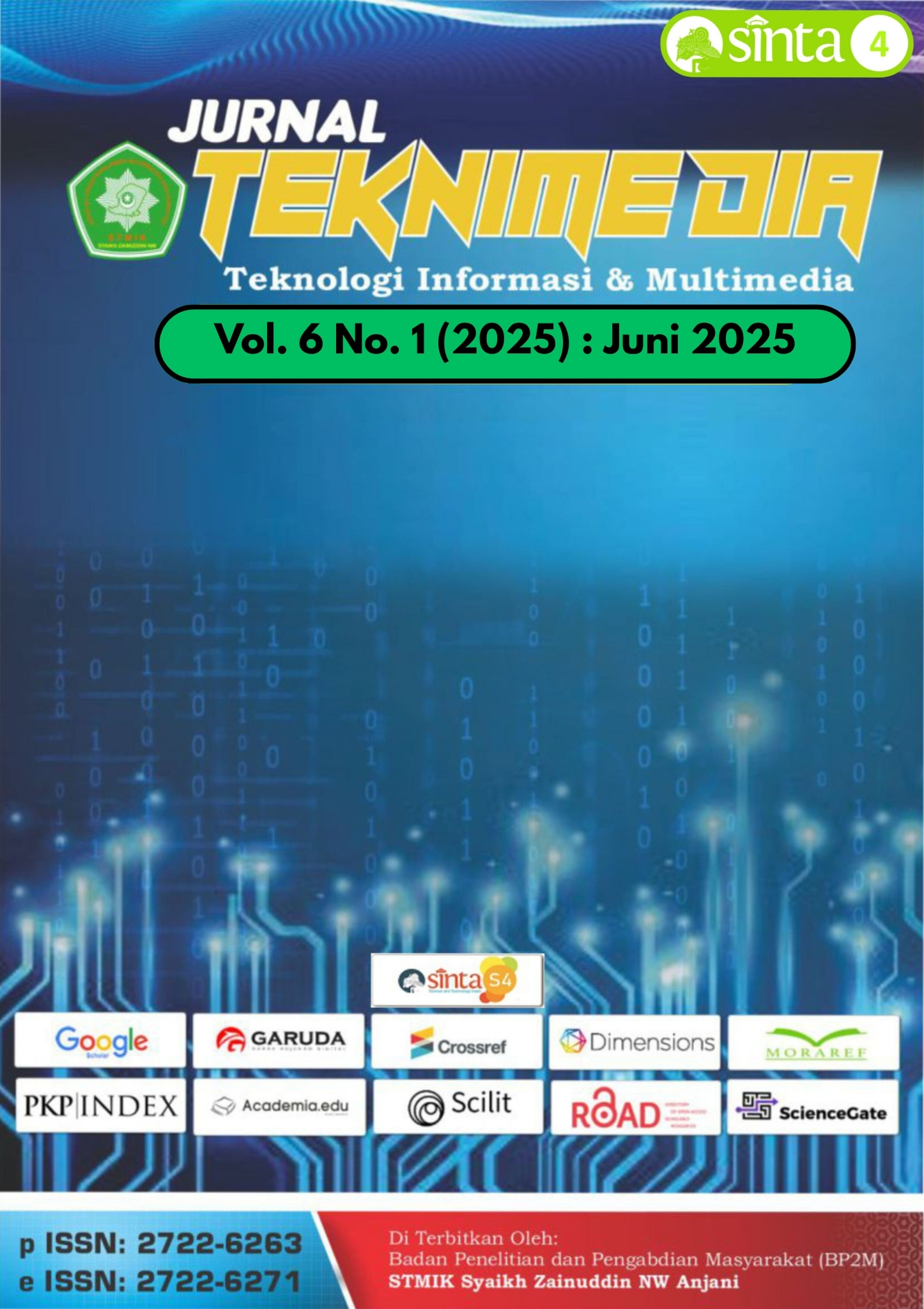KLASIFIKASI RANDOM FOREST TERHADAP DIAGNOSA PENYAKIT KANKER PAYUDARA BERDASARKAN STATUS KEGANASAN
Abstract
Breast cancer is one of the diseases with the highest mortality rate in the world. There are two types of breast cancer, namely malignant and benign. Identification of the type allows for prevention and appropriate treatment before it spreads to other organs. Therefore, a large amount of breast cancer data classification analysis is needed. Data mining techniques, such as random forest, can be used because they are able to provide accurate predictions with a low error rate. The results of this study indicate that *Random Forest is an effective and accurate method for breast cancer classification with an accuracy of 95% and an AUV-ROC value of 0.99 and a recall of 97% which shows the model's ability to distinguish the two types of breast cancer very well so that it can reduce the risk. The use of the 5-Fold Cross-Validation technique) ensures that the results obtained are stable and do not depend on certain data divisions, thereby increasing the generalization of the model. Experiments on various parameters (n_estimators, max_depth, training data size) show that the best configuration is n_estimators = 100 and max_depth = 10, which provides the optimal balance between accuracy and model complexity. This model can be applied in a **Medical Decision Support System* to assist doctors in *early detection of breast cancer*, thereby increasing the speed and accuracy of diagnosis.
References
[2] Sadikin, B. G. (2024). Strategi Indonesia dalam Upaya Melawan Kanker . jakarta
[3] Jamaludin, Fajar, A. K., Mutaqin, M. Z., Mutoffar, M. M., & Setiyadi, D. (2024). KLASIFIKASIKANKER PAYUDARA MENGGUNAKAN ALGORITMA NEURAL NETWORK DAN RANDOM FOREST. Jurnal Manajemen Informatika & Sistem Informasi (MISI, DOI : 10.36595/misi.v5i2.
[4] D. Casadei, G. Serra, and K. Tani, “Implemen-tation of a Direct Control Algorithm for In-duction Motors Based on Discrete Space Vector Modulation,” IEEE Transactions on Power Electronics, vol. 15, no. 4, pp.769–777, 2007.
[5] Derisma. (2020). Perbandingan Kinerja Algoritma untuk Prediksi Penyakit Jantung dengan Teknik Data Mining. J. Appl. Informatics Comput, vol. 4,no. 1, pp. 84–88, 2020, doi: 10.30871/jaic.v4i1.2152.
[6] Andryan, M. R., Fajri, M., & Sulistyowati, N. (2022). Komparasi Kinerja Algoritma Xgboost Dan Algoritma Support Vector Ma-chine (Svm) Untuk Diagnosis Penyakit Kanker Payudara. JIKO (Jurnal Informatika Dan Komputer), 6(1), 1. https://doi.org/10.26798/jiko.v6i1.500
[7] Mitra, R. &. (2022). Efficient Prediction of Stroke Patients Using Random Forest Algorithm in Comparison to Support Vector Machine. In Advances in Parallel Computing Algorithms, Tools and Paradigms, (pp. 530–536). https://doi.org/10.3233/apc220075.
[8] Siregar, A. P., Purba, D. P., Pasaribu, J. P., & Bakara, K. R. (2023). Implementasi Algoritma Random Forest Dalam Klasifikasi Diagnosis Penyakit Stroke. Jurnal Penelitian Rumpun Ilmu Teknik (JUPRIT) .
[9] Purnamawati, A., Nugroho, W., Putri, D., & Hidayat, W. F. (2020). Deteksi Penyakit Daun pada Tanaman Padi Memakai Algoritma Decision Tree, Random Forest, Naïve Bayes, SVM dan KNN. INFOTEKJAR:JURNAL NASIONAL INFORMATIKA DAN TEKNOLOGI JARINGAN.
[10] Rahmawati, A., Sari, I. U., & Sumarti, H. (2024). Klasifikasi Tumor Payudara jinak dan ganas pada citra ultrasonografi (USG) berdasarkan karakteristik tekstur memakai metode Random Forest. Teras Fisika.
Copyright (c) 2025 TEKNIMEDIA: Teknologi Informasi dan Multimedia

This work is licensed under a Creative Commons Attribution-ShareAlike 4.0 International License.
Semua tulisan pada jurnal ini menjadi tanggungjawab penuh penulis. Jurnal Teknimedia memberikan akses terbuka terhadap siapapun agar informasi dan temuan pada artikel tersebut bermanfaat bagi semua orang. Jurnal Teknimedia dapat diakses dan diunduh secara gratis, tanpa dipungut biaya, sesuai dengan lisensi creative commons yang digunakan.

Jurnal TEKNIMEDIA : Teknologi Informasi dan Multimedia is licensed under a Lisensi Creative Commons Atribusi-BerbagiSerupa 4.0 Internasional


.png)





